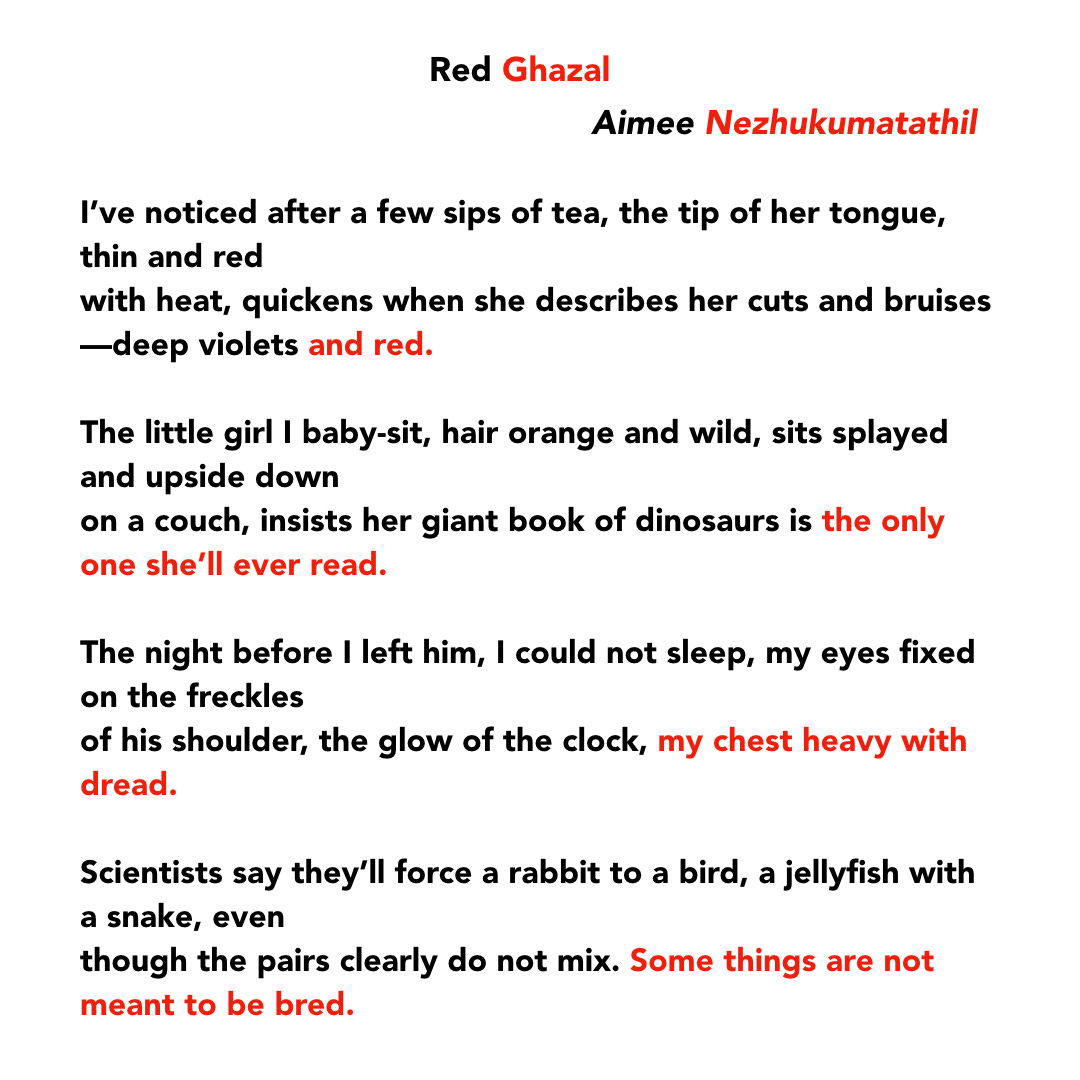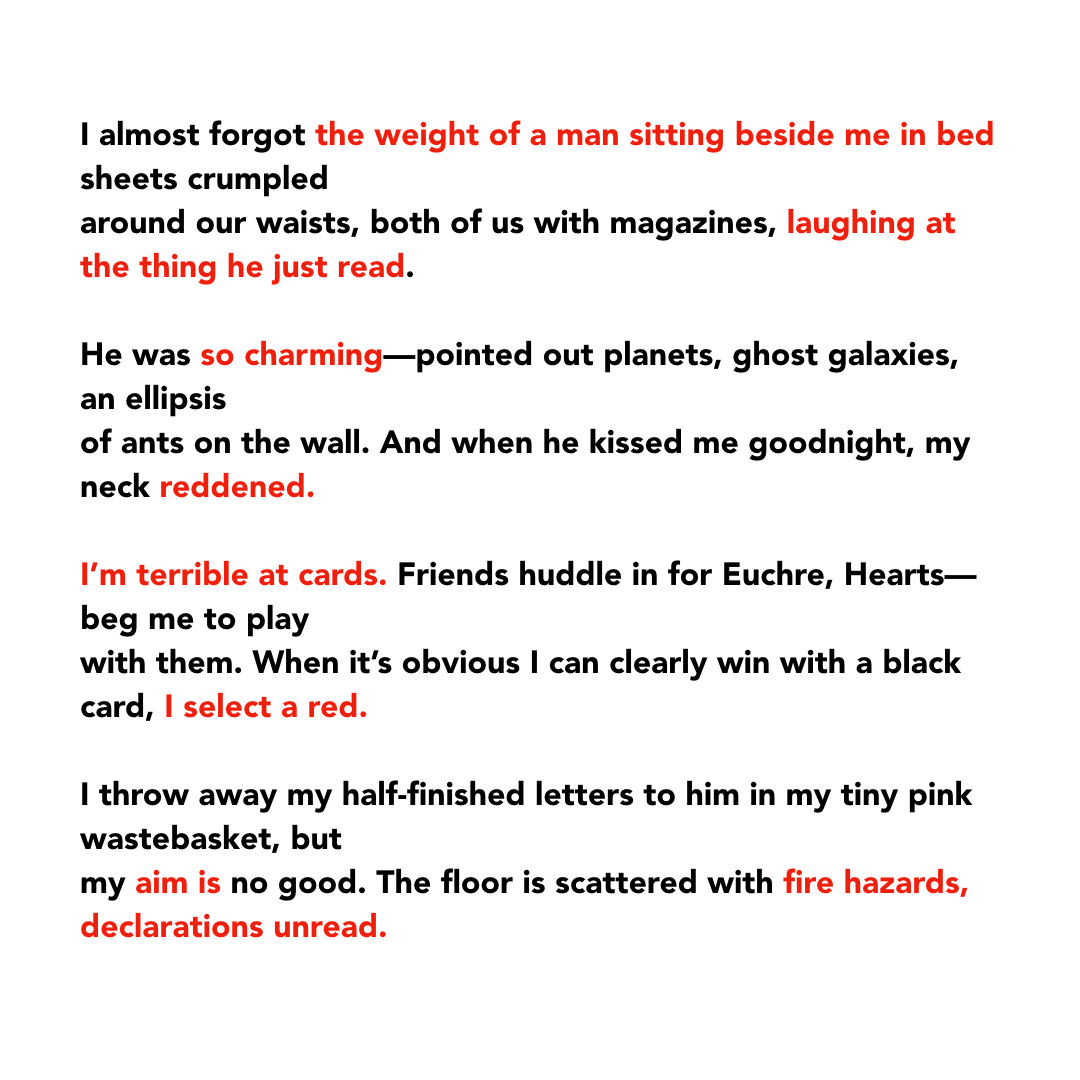“Aimee Nezhukumatathil’s poems are as ripe, funny and fresh as a precious friendship. They’re the fullness of days, deliciously woven of heart and verve, rich with sources and elements—animals, insects, sugar, cardamom, legends, countries, relatives, soaps, fruits—taste and touch. I love the nubby layerings of lines, luscious textures and constructions. Aimee writes with a deep resonance of spirit and sight. She’s scared of nothing. She knows that many worlds may live in one house. Poems like these revive our souls.”
- Naomi Shihab Nye
The Ghazal is one of the most beautiful forms of poetry. It opens up an arena wherein no two shers (couplets) in the poem have to be connected. It is the radif (the refrain word of phrase) that threads gems lit with myriad shades, into a single necklace. Often, the last sher clinches a winding argument, or makes a definitive stand, while using the poet’s takhallus (pen name), or hiding their name in some subtle way (Do make sure you see how Aimee has done it in this poem!).
While the ghazal emerged in Arabic poetry, and many famous shayars in Urdu and Persian, even mystics poets, have used the form extensively, it has also found voice a home in English poetry. Agha Shahid Ali, a brilliant poet, scholar and proponent of the form, has written several ghazals in English and studied and compiled several ghazals in the Indian language.
I believe that poets push themselves to find newer ways of expressing, and discover innovative pathways by applying the frameworks of poetic form while writing. What Aimee Nezhukumatathil has done here with ghazal form is extremely interesting. Not sticking strictly to the syllabic rules, she plays with the radeef and uses variations of a single word, thus establishing connections between couplets that are similar and different at the same time.
The form opens up like a translucent japanese fan of myriad patterns in her hands, simultaneousy refracting light on different experiences and emotions. What Nye observes, “She knows that many worlds may live in one house”, comes alive in this Red Ghazal - an imaginarium of colour, romantic love, heartbreak, worry, self-doubt, loneliness, desire, impulsiveness, contemplation, and sensation; to name a few. This rumination lays out a map with divergent strands in the persona’s lifeworld, and the different people and relationships that populate it, . It magnifies minutiae and murmurs under the breath universal impulses that are not easily translated into words.


Do share poetly with one who would gladly walk the meandering road of the ghazal with you!
Subscribe to the Poetly newsletter if you already haven’t!


